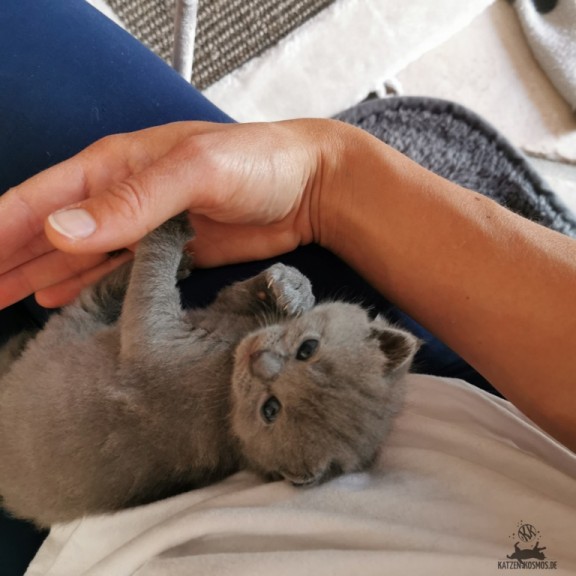Tierkommunikation mit deiner Katze
Was möchte dir deine Katze sagen?
Welche Bedeutung hat ihr Miau?
Tierkommunikation mit deiner Katze kann dir die Antwort geben.


There are many sources that claim different things about the origin of the Chartreux. So there is still a lot of discussions.
The first description of a blue cat, which corresponds in appearance to the modern Chartreux, can be found in a poem from 1558 entitled “A French Verse on the Death of a Little Cat”, which was written by the French writer du Bellay in Rome. In this poem, the cat’s fur was described as silver-gray, shiny and smooth like satin, which lay on the back and had a hermeline underside. It wasn’t a completely gray cat. However, the author indicated in a subordinate clause that such gray cats already existed in France.
In 1522 the Italian scholar Aldrovandi described the different diversity of cats in his book “De quadrupedibus digitativis Libri Tres”. But among other things in this book he named a breed that has a pale and dark ash-gray fur. It had a rounded snout, a muscular chest and strong paws. The breed is described as good-natured, easily domesticated, vigilant, and loyal to their master. And it originally came from Syria, the so-called “Syrian Cat”.
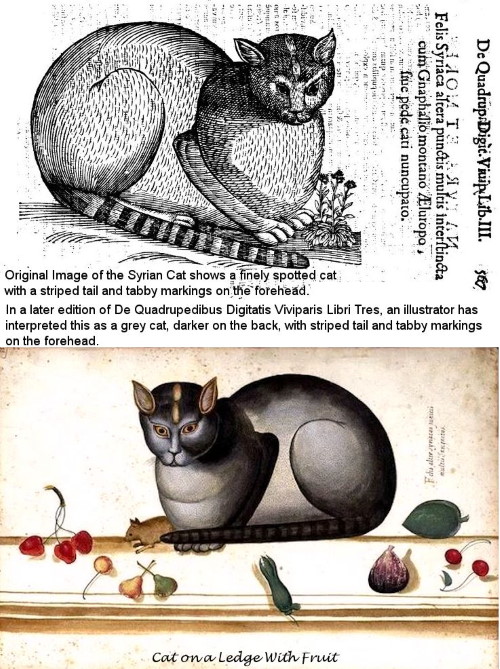
Further descriptions of a gray / blue cat can also be found in Malta and Cyprus. The Englishman Ray referred to the “Syrian Cat” in his work (1693 in London) as “Cyprus Cat” and de Montcrif spoke of beautiful slate-colored cats on the island of Malta in his book “Cats” (1772).
In many other writings, the names “Syrian Cat”, “Cyprus Cat” and “Maltese Cat” were used synonymously for the slate-colored or gray cats. The names always refered to a certain cat phenotype, which looked very similar to our Chartreux cat today. Pictures of cats from different geographic locations showed clearly similarities.
It seems that the origin of the Chartreux is somewhere in Syria and as a good mouse and rat catcher it made its way to Cyprus, Malta, Italy and then France via the trade routes in the Mediterranean. The Syrian mountains and the rugged mountains of neighboring countries such as Turkey and Iran, where the nights were cold, come into question as a home. The fur of the Syrian cat, however, was perfectly made for these climatic conditions: dense and woolly.
The first ancestors of our Chartreux most likely came to Europe in the middle of the 17th century. Pietro della Valle, an Italian explorer and travel writer, found on one of his excursions around 1620 in an Iranian province (Khorasan in Persia) a gray cat whose beauty lay in its fur, without spots, with a uniform color. He was so impressed that on his return to Rome in 1626, he stopped in Cyprus, Malta and Sicily, among others, and brought the first gray cats to Europe. Shortly afterwards, the scholar, astronomer, collector and antiquarian Nicolas Claude Fabri de Peiresc learned of a breed of cats from the Orient through written contact with Pietro della Valle. To protect his books from the voracious rats, he brought at least 5 male and one female cats from Damascus to Provence in France. Through a targeted and successful reproduction (no mixing with other breeds) he sent these cats friends and relatives, so that this gray cat species spread throughout the country and, among other things, also reached Paris.
Unfortunately, it is not entirely clear where the Chartreux name comes from. A widespread assumption is that the monks in the monastery “Grande Chartreuse” in the south-east of France should have bred gray cats. But this claim cannot be substantiated in the monastery archives. The book “Universal Dictionary of Commerce” by Savarry des Bruslon (1723) shows an indication of a possible plausible origin. In this practical dictionary for traders it is written that the skin of the Chartreux is used by the skin makers. An excerpt:
The term Chartreux was probably already in everyday use for a long time before it was first recorded in writing. Due to the great similarity between the ash-gray, woolly fur of cats and the gray wool “Pile de Chartreux” from Spain, it was probably transferred to cats and used in the same way.
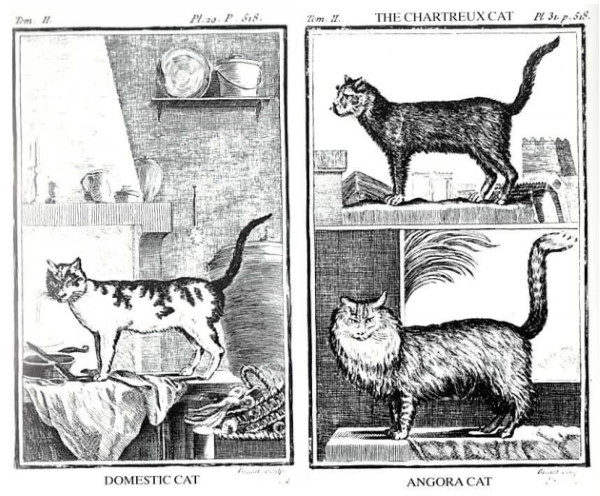
The first illustration of a Chartreux can be found in “Histoire naturelle de Buffon” (1754) by Georges Louis Leclerc Comte de Buffon with a detailed description of the Chartreux and a comparison between the domesticated cat, the Angora cat and the Chartreux.
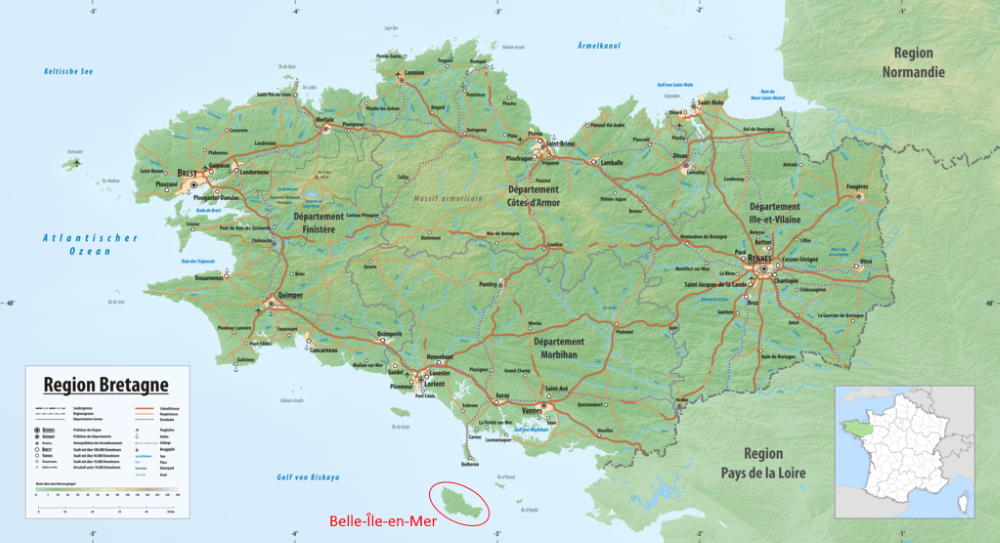
Until the 20th century there was no selective breeding of the Chartreux. It was not until around 1925, when the Leger family moved to the island of Belle-Ile-en-Mer with their sisters Christine and Suzanne, that the Chartreux breed of today began. The two sisters fell in love with the beauty of the blue-gray cats that lived there. From the very first mating of Marquise, her first blue cat, and Coquito, the first blue male, Mignonne de Guerveur was born.
Guerveur is the dialect in Brittany and means Belle-Ile. She was priced the most beautiful cat in the show at the Paris exhibition in 1933 and was awarded the title of Chartreux International Champion.
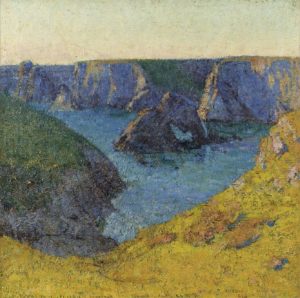
Suzanne Leger formulated the first standard for the breed of Chartreux in the article “Le Chat des Chartreux, Race Reconstituée” published in the magazine “La vie à la champagne” in 1935:
Many phenotypic features can still be found in the current Chartreux standard.
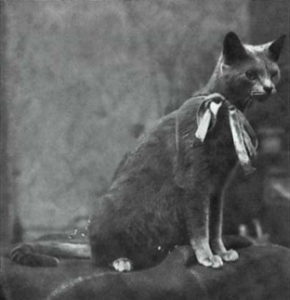
In the 1965 the Chartreux breeders got a serious problem because the stock was very inbred. Malformations and increased susceptibility to disease were the result. Most breeders at the time were ignorant of the history of the Chartreux or did not appreciate the breeding work of their antecessors. In order to bring new bloodlines and thus more health into the breed, they looked for a breed similar to the blue-gray cats and found above all the British Blue. It is worth mentioning here that the blue-gray cats of the British Blue are only a small selection of the many different color variants of the British Shorthair breed. (So I will call it here the British Blue Shorthair.) In addition, the British Blue Shorthair had a completely different phenotype than the Chartreux at that time and still does today. From these mixtures, hybrids emerged that could no longer be clearly assigned to one or the other race. In 1970 the Federation Feline Internationale integrated both breeds into one breed class and established the British Blue Shorthair standard for them. At that time, the original Chartreux breed no longer officially existed.
Thanks to major protests by French and Belgian Chartreux breeders and the study of the identity and history of the Chartreux by Mr. Jean Simonnet, the Federation Feline Internationale reversed this decision in 1977 and again separated the breeds into Chartreux and British Blue Shorthair, each with their own standards . (See the comparison between Chartreux and British Blue Shorthair →)
Unfortunately, not all clubs and thus not all breeders were affiliated with the Federation Feline Internationale, so that the name Chartreux and in German “Kartäuser” is still used improperly for the British Blue Shorthair.
From then on, the constant improvement and renewal of Chartreux began.
Source:
Was möchte dir deine Katze sagen?
Welche Bedeutung hat ihr Miau?
Tierkommunikation mit deiner Katze kann dir die Antwort geben.

Erfahre, warum es für eine Katzen schöner und artgerechter mit einem Katzenfreund ist.
